As we pushed away from the dock at Hanko, we were starting a new chapter. No longer would we be exploring deeper into the Baltic. Hanko would represent our turnaround point, as we headed back west to Sweden, and then made our way south to our winter haul out location in Kalmar. These are milestones that can be bittersweet. When we were younger and we’d go on a one week family vacation, the first few days would always be super exciting and I would marvel at how much we were doing each day and how much more we had left of our vacation time. Then, suddenly, it would be Wednesday and our vacation was half over. Yes, we’d have a few more days of fun, but it was hard to get your mind out of thinking about re-entry. I wanted to go back to the innocence of those first few days. That headspace takes a lot of work to reach, and can be as slippery as the devil to hold on to. But we had to remind ourselves; this was Finland and Sweden, the two countries that we had so cherished exploring at the beginning of the summer, and we still had over a month of sailing days to leverage. It’s ironic that the same mind that leads you into a troubled mental state is the same mind needed to pull you back out. Your friends, your therapist, maybe even a stranger can assist, but it starts and ends with you.

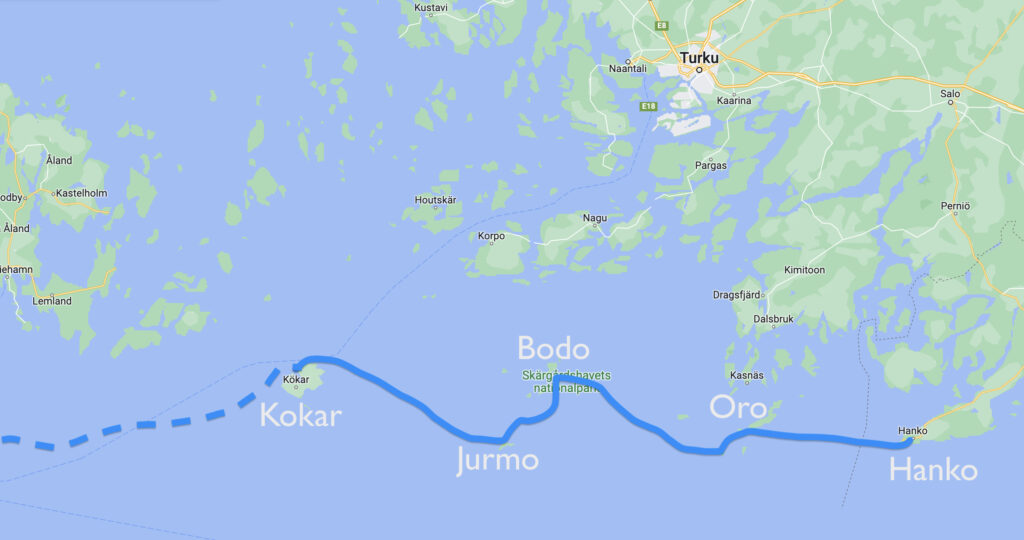
With a positive attitude and excitement for the remainder of the summer, we put the engine in reverse at Hanko and promptly snagged the stern line around our rudder! A strong cross breeze hung on from a storm that blew through last night, and try as we might, we couldn’t help but be pressed tight against our neighbors line running out to their stern buoy. We couldn’t keep the engine in gear for fear of wrapping the line around our propellor. We couldn’t walk the boat backwards as the line was caught around the top of our rudder. A cross breeze is the most challenging of docking situations. Imagine parking in a stall with cars on either side of you, ice underneath you, and a tilt to the road surface. As you pull out, there’s nothing stopping you from sliding into the car next to you. That’s what we experienced. We retreated back to the dock, pulled our way upwind and with some careful and rapid use of reverse, we were able to successfully clear boats, lines and buoys. Take 2 was a success!
We proceeded to sail west for 25 miles seeing lots of other sailboats, but none going in our direction. They were all headed east, likely to the main population centers around Helsinki. It was the first week of August, and with schools going back into session the following week, the migration back home had begun. Everyone had told us this is the best time to sail in Finland, but when everyone is evacuating the stadium and you’re the only humans going in, it can cause you to do a double take. Our destination was the island of Oro, standing out on the edge of the Gulf of Finland. It should have come as no surprise to us that Oro, like Hanko, was sought after as a strategic defensive position for the country. After we tied up at the guest harbor, Karen and I rented bikes to ride the old military trails between large gunnery emplacements. Russian monarch Peter the Great used Oro as his naval fortress in the early 1700’s to protect Russia’s capital at St Petersburg. When Finland gained its independence in 1917, the island’s defenses were upgraded and expanded to include communications and surveillance. We found one gun battery that looked like a UFO landing site, faded and with its access hatch welded shut. Adjacent was a tall radar tower dating from the 1970’s, still operating, and accessible to walk right up to its base; I was surprised that only a simple chainlink fence separated curious visitors from ascended the metal ladder. Perhaps, like an old iPhone left behind by thieves, this equipment wasn’t worth the effort. On the northern tip of the island, as we passed bird lovers enjoying the islands more recent and civilized mission as the Archipelago National Park, we found numerous bunkers built into the soil, providing perfect camouflage against a rocky, uneven, and muted background. Beyond heavy metal doors I found old rusty bed frames shoved into corners of concrete-wrapped rooms, looking exactly how video game developers portray them with loose wire falling out of dangling conduit, rivets of water dripping from cracks in the ceiling, and dark enough to support a family of rats. Certain members of our party took a pass on entry!
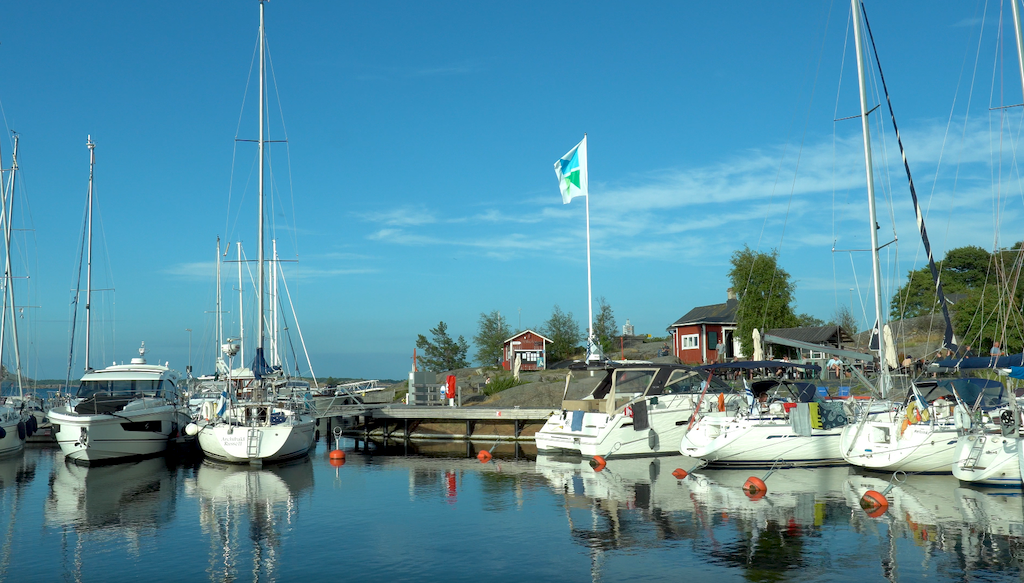
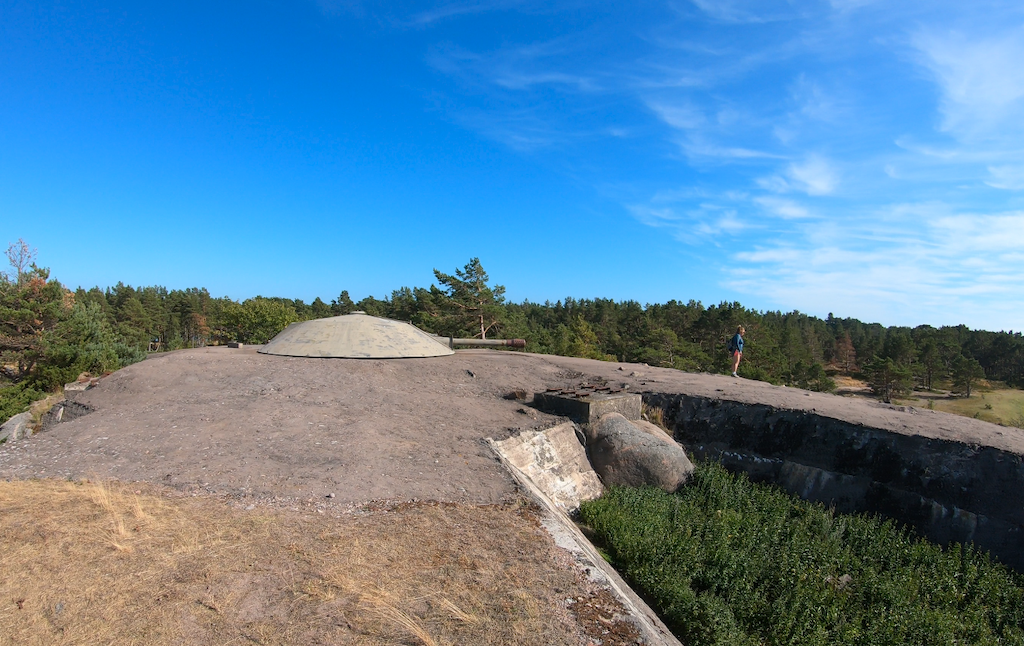
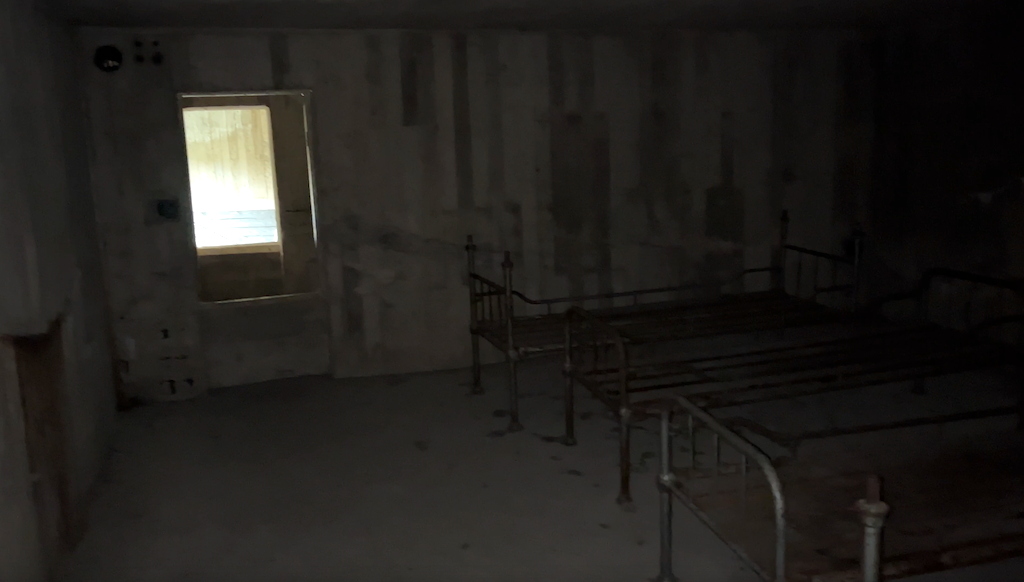
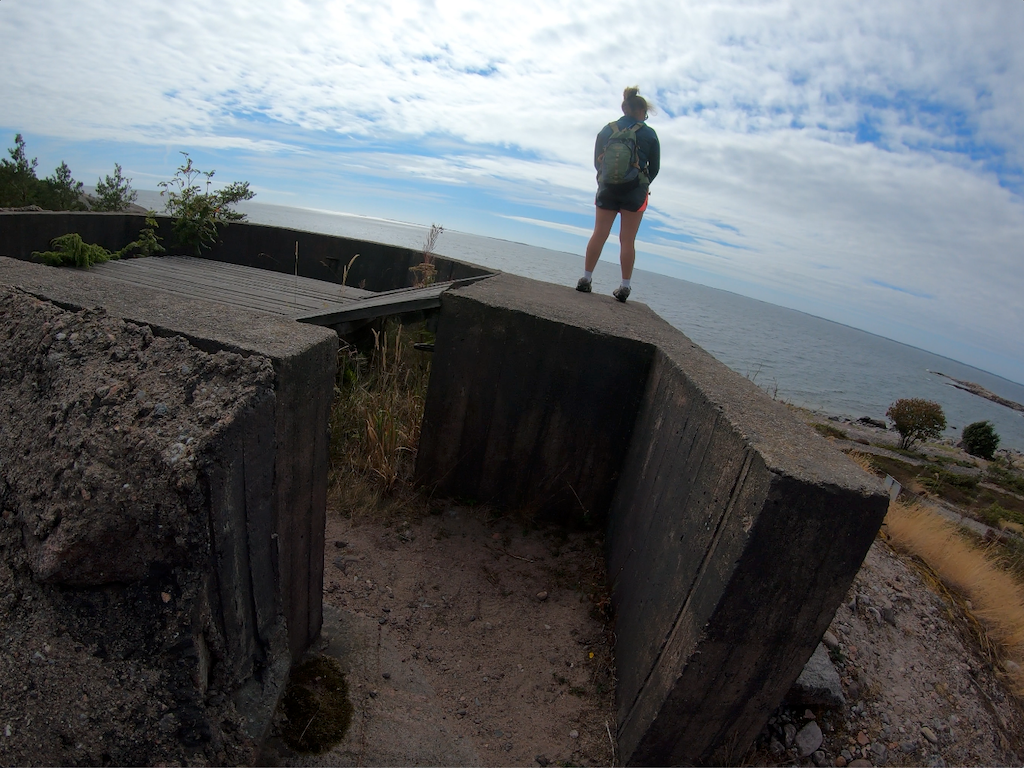
It did make me wonder why we have this odd infatuation with war and its accoutrements, as I walked out of my third dark bunker. This island is known for its rare plants and butterflies, as well as migratory birds, but still I found myself being pulled into this island’s military history. And it wasn’t just in Finland. This summer, we had been enamored with the history of World War II as we walked old sites in Camaret-sur-Mer, on the island of Jersey, and sailed past the shores of Dunkirk. These were only a micro sample of the planet’s dark history of man fighting man. Yet, with the possible exception of the Pont des Arts bridge in Paris, it’s rare that we celebrate the foundations of love between one human and another. How many lovers christened a life together on the Isle of Wight? I’m sure quite a few. Yet, no plaques commemorated the place of these unions, nor is there a museum on the island dedicated to the many creative ways these courageous couples manifested their undying love for each other. Maybe it is time for the 60’s to return – decoupled from the horrors of the Vietnam War of course.
In the morning, it was time to slip into the sauna before launching into the rigors of the day’s sail. Most people make the sauna their evening experience, which makes for a quiet, peaceful time in the morning for the rest of us. This sauna had separate men’s and women’s sides, marked by a flip-over style sign at the door. The other side of the sign simply read ‘private’, and had been left that way from the previous evening’s private reservation sessions. In some level of language translation confusion the evening before, we had understood one of the two sides were open to the public and used by women one hour and men the next. This misunderstanding led to a certain American woman walking in, sans clothing, and interrupting a two-couple private sauna underway … also sans clothing. That experience left us feeling the need to be extra careful in the morning, double-checking signs and carefully peeking around dark hallways as we turned on the lights, got undressed, and entered our separately gendered sides. Soon, as I sweated it out alone on my side, I could faintly hear Karen chatting away with another woman next door. Ahh, good, we had interpreted the signs correctly. But not long after, their voices were intermixed with that of a man. Hmm. Soon, the two woman got back to talking amongst themselves, as a young guy trotted into my side of the sauna and cheerfully took a seat. As it turned out, he had also mistaken which side was which gender, and had walked in on Karen and her new friend. I thought, all we need now is a trashy romance novelist to take up their pen!
Our destination for the day was another 25 mile hop to the island of Bodo. Twenty-five miles is just about the perfect distance for day trekking on a sailboat. With accommodating weather, you can get to your destination in 4-5 hours, allowing you to truly experience the sail itself, while still giving you time to find an anchorage for the night and explore your earthbound surroundings.
It is not unusual for the wind in this area to come out of the west, which would slow our progress, but on this day we were blessed with a light southerly wind, just enough to coast along, in between the hundreds of scattered, small, low-lying islands that block any significant swell but allow the wind to pass freely.
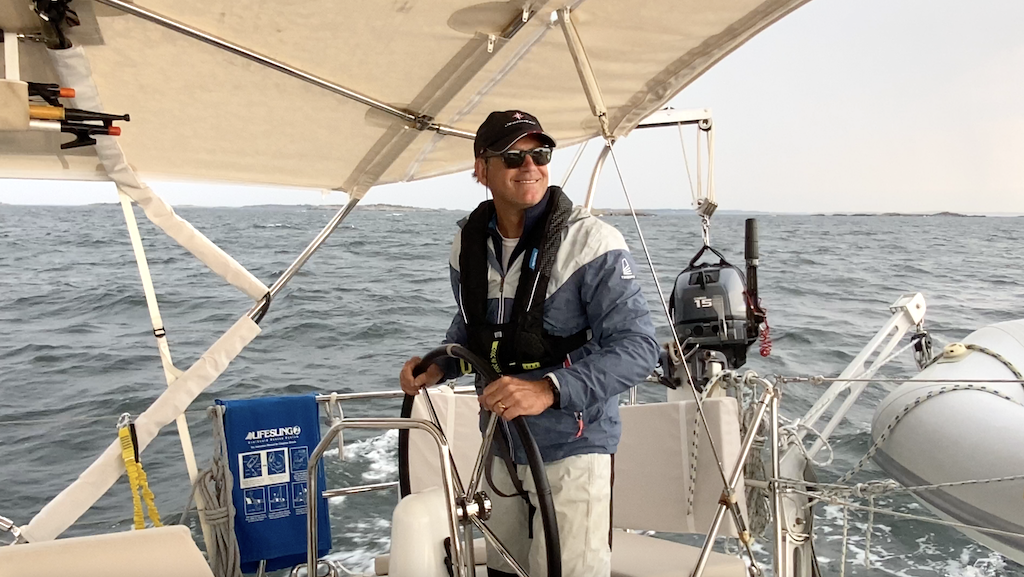
We were eager to lay the anchor down for the night instead of working to dock at another guest harbor. But the best anchorage option in Bodo was a skinny passage of water leading to a round pool at the end. We passed a few roofs of summer cottages tucked in behind big boulders on the shore, where earlier this summer there were likely the cries of joy from children and grandchildren of the owners. But now in early August, it held the same din of human existence as a county fair after the gates are closed and the rides are stowed, waiting for drivers to ferry them away. We furled our sails and approached slowly, wondering why there was an intel conflict on the depth of the entrance. Previous boaters had reported 2.5-3.5m of depth, but the chart showed much less. We decided to launch the dinghy and I would go ahead with the portable depth sounder and VHF radio to scout out a path. I found plenty of shallow water leading from both sides of the shore, but there was a narrow 3.5m path through the middle, leading to a marvelous pool with plenty of room in 7m of depth. With our eye on the prize, Karen slowly motored as I led her down the deepest part. But the deep water was finicky. Twisting my head from side to side to recall the exact distance from shore I was at the first time, Karen got down to just a half meter under the keel. I can tell you the girth of a boat doesn’t become fully obvious until you step out of the cockpit and look at it from a dinghy at water level. I was quite happy to not hear our keel touch bottom.
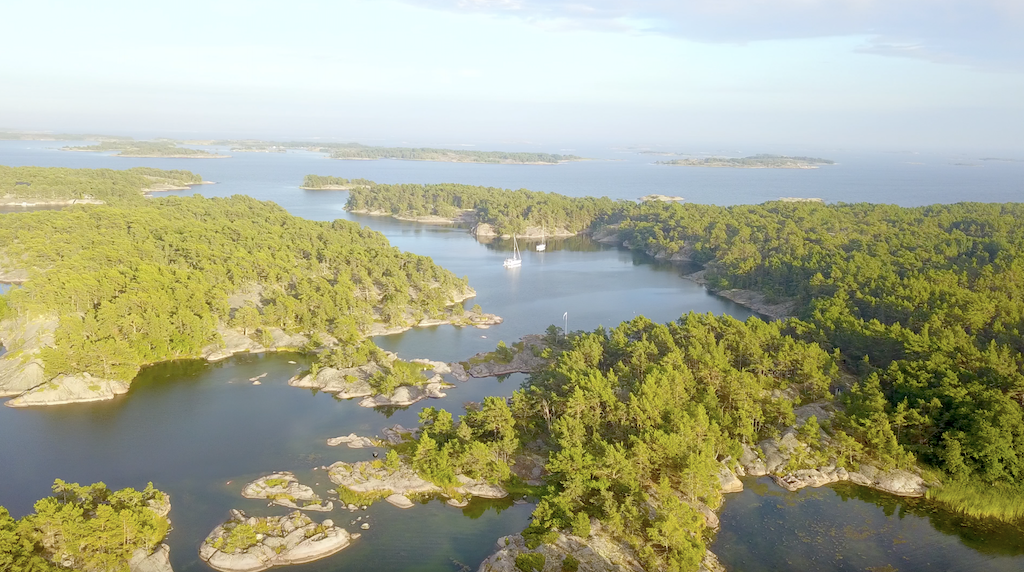
Our own private hideaway was ours for no more than ten minutes, as another sailboat, perhaps seeing our mast stick out above the surrounding islands, puttered in and dropped their hook. Had they been here before and knew exactly where to go, or had they seen us safely anchored and decided there is safety in numbers – it was hard to know. But I can say that this scenario, where another boat follows you into an empty anchorage, had happened repeatedly for us. As they say, imitation is the sincerest form of flattery!
After a windy exploration of the surrounding islets by paddle board and a sunset bookend on the day, we were ready to head out in the morning to continue our mileage west towards Sweden.
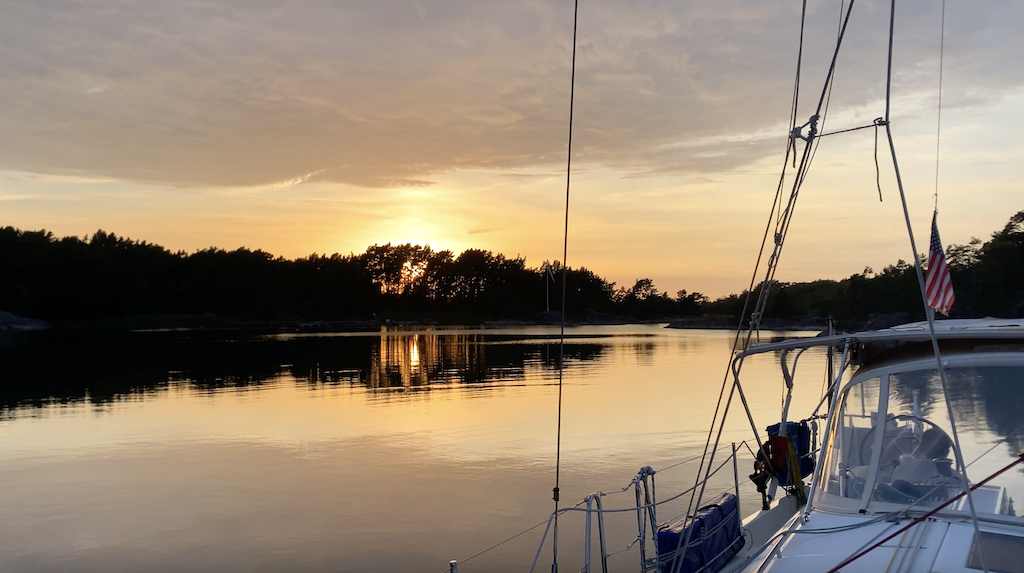
In these outer islands of the Finnish archipelago, the land masses are further separated, with lots of water in between, unlike the close navigation we did near Turku. Still, there are plenty of rocky obstacles just above and below the surface that can be the demise of a tired or careless navigator. The nautical charts mark prominent east/west fairways that are well buoyed to keep sailors safely at distance from most obstacles, but these fairways also place you in a concentrated area with other sailors trying to stay away from the hazards. As soon as Karen and I hoisted our anchor at Bodo and joined the fairway, it took constant attention by both of us to spot oncoming traffic as well as the correct buoys to execute our turns. The winds were strong but manageable, putting us on a close hauled course along this fairway. Soon darker clouds appeared on the horizon upwind of us, and we quickly donned foul weather gear, started a radar watch, and took turns driving the boat through the light chop.
Just 6 miles ahead was the island of Jurmo, another recommended stop by our friends Heli and Kalle. But I had an uneasy feeling about the place before we even arrived, as we furled sails and motored up a long shallow entrance channel. The winds were increasing, and the forecast called for more high winds overnight. Docking in high winds was going to be our only option, and nothing was stopping the winds through the guest harbor on this rocky, treeless, low-lying island that felt like the Finnish equivalent of Siberia. We had seen nothing like it before – certainly very cool, but intimidating. A mile long line of rock ran out from the harbor to the west, as if it had been swept there by a giant’s push broom back in the ice age. Jurmo was likely a unique adventure on a calm sunny day, but on this day it felt like Hell frozen over. We made a quick 360, and set sail back out the channel.
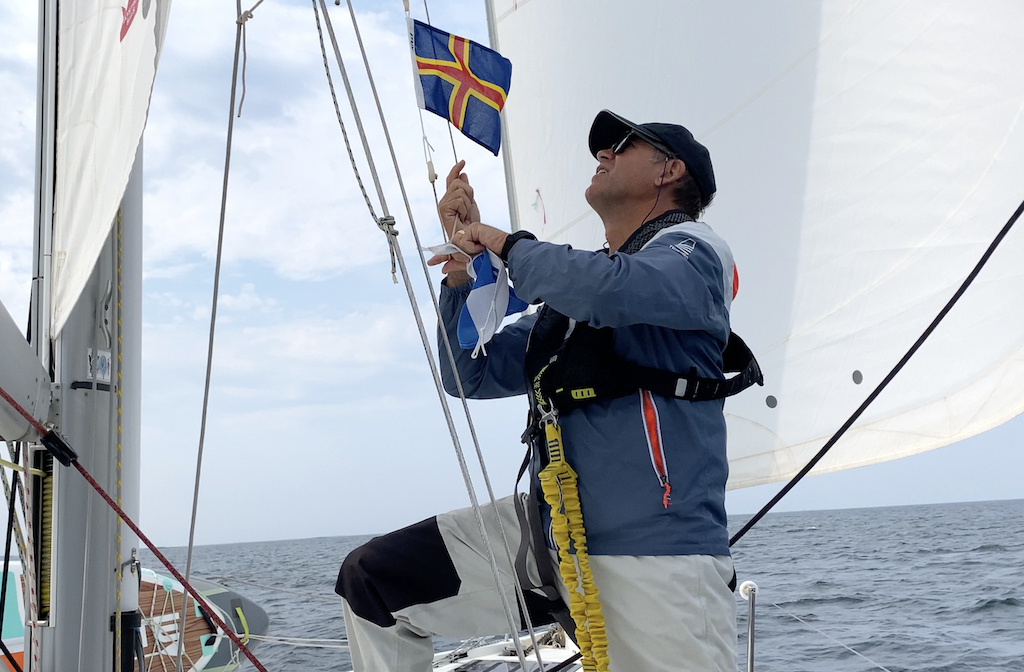
Another 15 miles downwind was the much larger and more wooded island of Kokar. With winds peaking at 25 knots, we settled on two reefs in the mainsail and a glorious sleigh ride run past our sailing brethren sailing the opposite direction, heeled over so far we couldn’t see anyone in the cockpit. It was hard not to be too smitten.
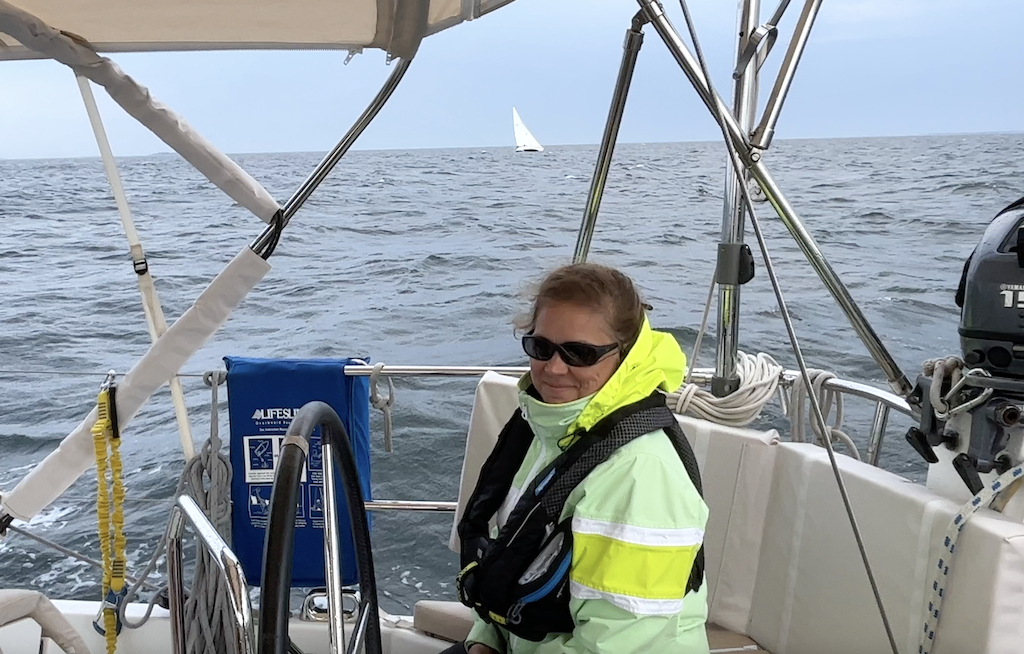
Plenty of space was available on the guest harbor dock as we doused sails two hours later, but even more space tempted us in the anchorage just off the dock, surrounded on three sides by rocky shoreline and plenty of swing room. Given the wind forecast in the next 24 hours, we felt much safer swinging to our anchor then trying to figure out where to position fenders and docklines to minimize our contact with the guest dock. I used to not sleep as well when we were anchored out. But now it gives me great comfort, stemming from our confidence in both our anchoring gear and our anchoring skillset. Shortly after our hook was set, two other boats came in and anchored in the same vicinity. We all had the same idea of where to get protection from the high winds. Normally our anxiety level would increase in tandem to the number of boats anchoring around us, a result I’m sure that originated from the many harrowing experiences we had anchoring around charter boats in the Med. But here, our boating neighbors put out plenty of scope, reversed on their anchor to check its set, and were attentive to any wind shifts. We had little to fear.
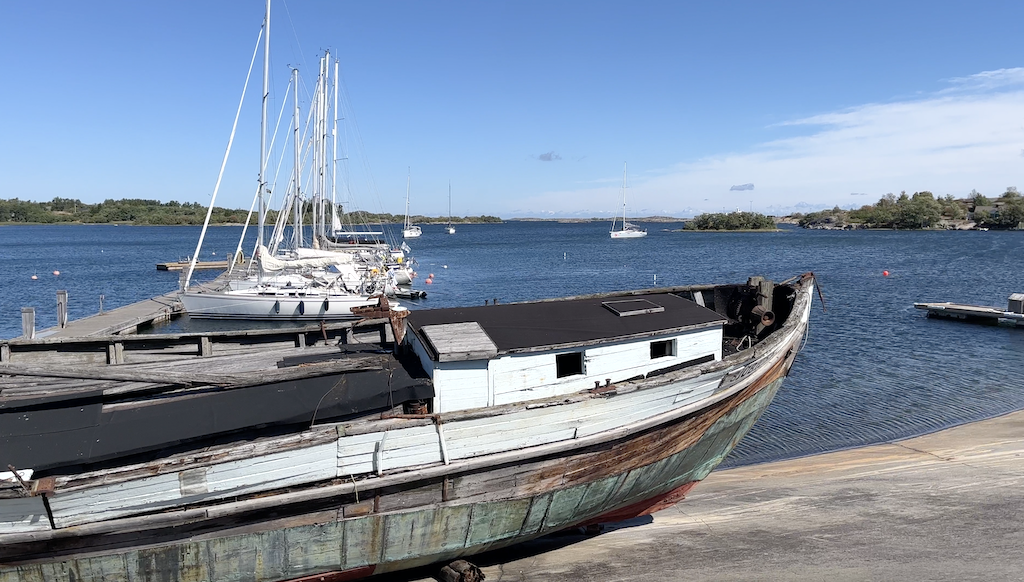
In the morning, we rented a couple of rickety old bikes – looking like they should have been committed to the trash pile long ago – from a very shy harbormaster whose affect led us to grin and bear it rather than make a complaint.
Kokar is large enough to support regular passenger and car ferry service from Turku in the east and Mariehamn to the west. But during this post high-season time, traffic was light and the company of other travelers on the roads and seated at the restaurants was a welcome change from the isolation of the last few days.
The sightseeing attractions on Kokar were of a quantity in proportion to its size; this was no Helsinki. Still, after biking past bee hives and an adjacent apple orchard, a scene we were quite familiar with from our home state of New Hampshire, we found the family run apple business with a tongue-twisting name of Pedersaplagard selling their unique form of carbonated apple cider. When a customer ahead of us in line was lamenting to the cashier how he couldn’t find their cider on the mainland, we made sure to snatch up a few bottles and enjoy a refreshing break on the outdoor patio. The stop was well timed, as our return to the harbor required cycling upwind on single speed bikes past fields of tall grasses being swept horizontally. We took a break to follow a foot path away from the road to a Bronze Age site named Otterbote. Here, remains were discovered of a settlement dating back 3000 years ago, thought to be that of seal hunters who would travel here from Poland in the early Spring to hunt on the sea ice. Like the Bronze Age Nuraghi sites we had visited back in Sardinia, these settlements followed the same circular stone foundation design with a diameter similar to the length of a typical passenger car. If you substituted ice blocks for stone, you would find these circular shapes also similar in dimensions to an igloo, at around 4 meters. Curiously, the size of a typical Native American teepee also has similar dimensions. Coincidence? Or was this the ideal size structurally and to retain heat?
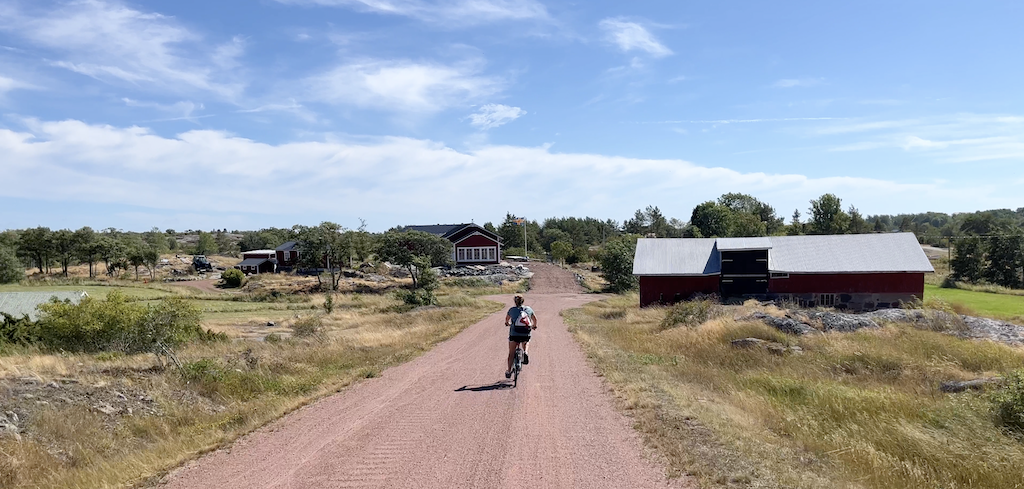

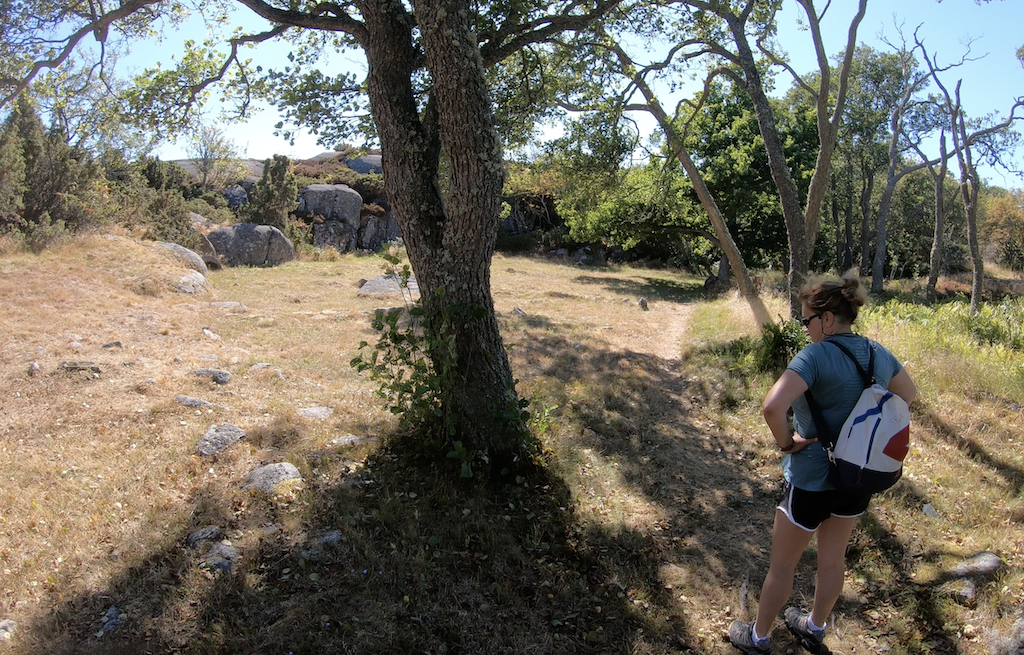
After a two-night stay at Kokar, our time in Finland was coming to an end. Crossing directly from Kokar back to Sweden made the most sense given the nice southerly wind forecast and our need to meet up soon with friends and family back in the Stockholm area. The Finland courtesy flag had just been doused the day before, replaced with the Aland flag, and soon the Sweden flag. We had spent three weeks winding our way between the sea of islands that comprise western Finland, discovering remote outposts held together by steadfast modern day families amongst a backdrop of strategic World War II fortifications and turbulent Russian conflicts. Yet, we found the Finnish people to have an endearing mix of kindness and reservedness. We had to be careful to park the typical American gregarious persona. If you slow down and observe, you’ll find a highly social civilization, with the warmth of a rustic sauna as a common gateway to conversation and conviviality. The Finnish are not a boastful society – the natural beauty and the rugged history of seafaring need no pronouncements. Just be careful if you find yourself walking to the sauna with a plate of fried Vendace. You may find the loss of your fish to the seagulls distract you from important signage on the do’s and don’ts of sauna intermingling. Leave no trace!
Be sure to also checkout the video content on our LifeFourPointZero YouTube channel. We regularly post updates on our sailing adventures, as well as how to videos on boat repair, sailing techniques, and more!

